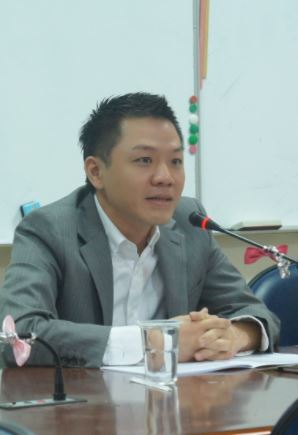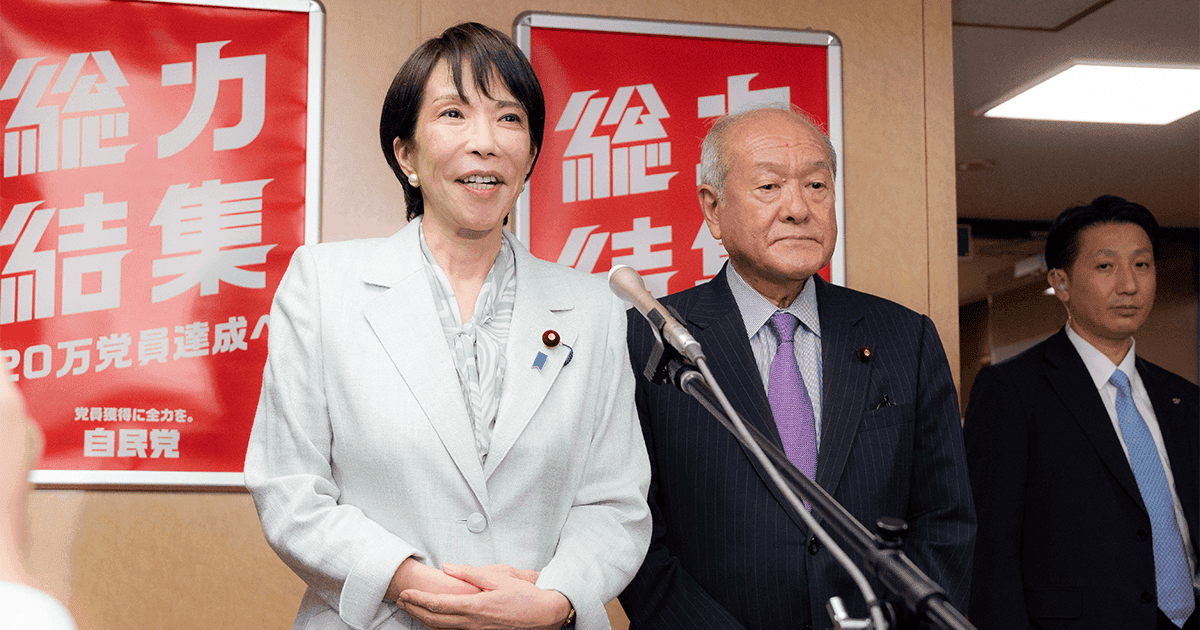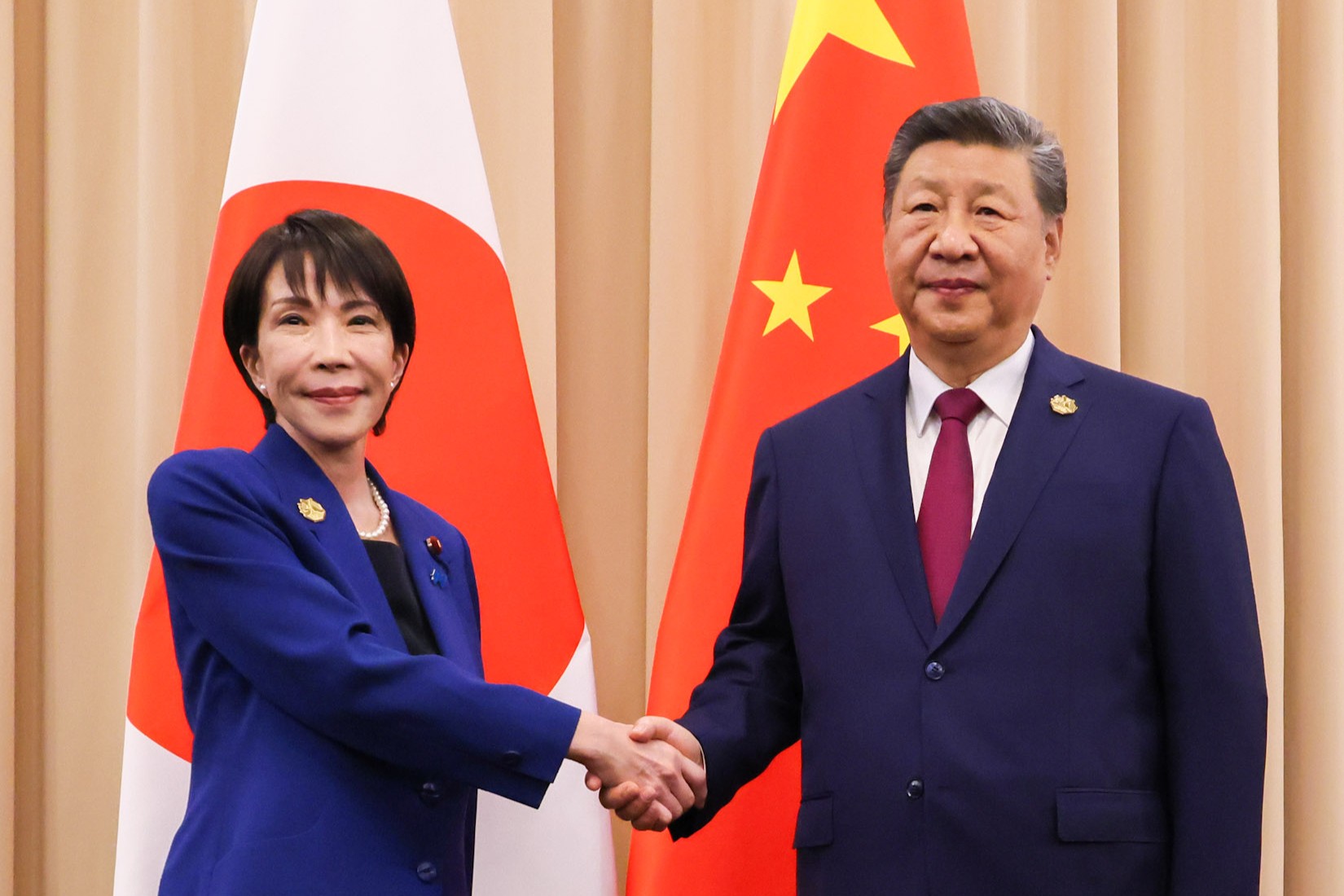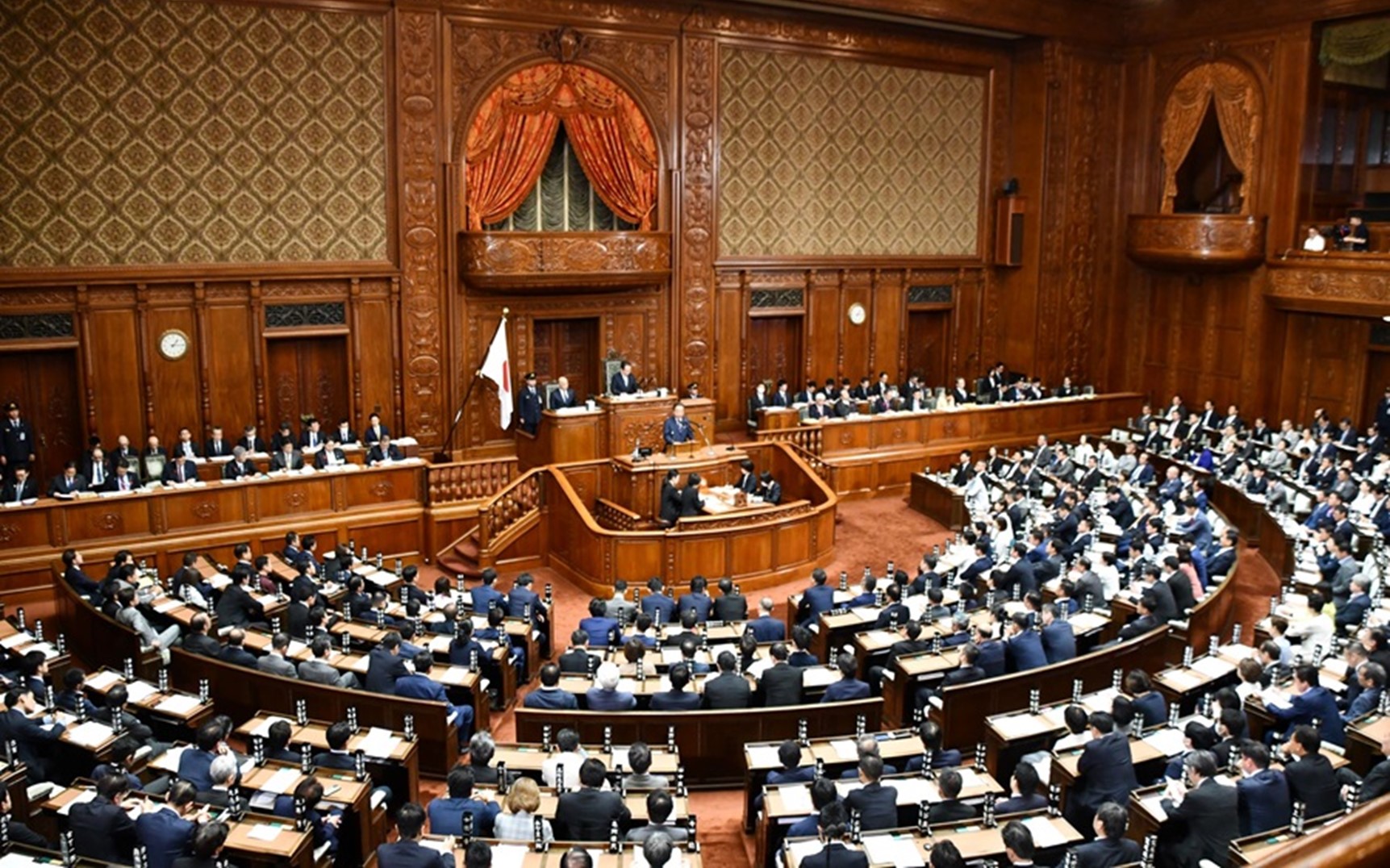Compromises in Domestic Politics and Foreign Policy: The Aftereffects of Takaichi’s Victory in the LDP Presidential Election
Sanae Takaichi’s victory in the Liberal Democratic Party presidential election in early October 2025 represented a dramatic shift in Japanese politics, with the politician becoming the first female party leader in 70 years. Takaichi, a strong conservative who models herself after the “Iron Lady,” Margaret Thatcher, now stands on the verge of becoming Japan’s first female prime minister. Picture source: The Liberal Democratic Party of Japan, October 7, 2025, LDP, https://www.jimin.jp/news/press/211540.html.
Prospects & Perspectives No. 56
Compromises in Domestic Politics and Foreign Policy: The Aftereffects of Takaichi’s Victory in the LDP Presidential Election
By Yujen Kuo
From Triumph to Turbulence
Sanae Takaichi’s victory in the Liberal Democratic Party (LDP) presidential election in early October 2025 represented a dramatic shift in Japanese politics, with the politician becoming the first female party leader in 70 years. Takaichi, a strong conservative who models herself after the “Iron Lady,” Margaret Thatcher, now stands on the verge of becoming Japan’s first female prime minister.
Her ideology largely aligns with the party’s traditional right wing on issues including constitutional amendments to Article 9 on Japan’s pacifist posture, visits to the Yasukuni Shrine, opposing separate surnames for married couples, LGBTQ+ rights, and the female succession to the imperial throne.
Takaichi’s conservative policy agenda is fundamentally incompatible with the fragile political reality. Her victory came through a narrow runoff secured by Taro Aso’s factional support. Crucially, the LDP has lost its majority in both Houses of the Diet, relegating the ruling bloc to a minority government. Takiichi’s subsequent personnel appointments, especially the Aso faction and Koichi Hagiuda, immediately exacerbated this precarious situation, which led to the collapse of the 26-year coalition with the Komeito party.
Komeito’s lack of trust in Takaichi means the prime minister designation vote might be postponed until October 20, which could stall the vital supplementary budget bill covering abolishing the current surtax on gasoline and diesel and expanding subsidies to local governments amounting to as much as 1.5 trillion yen. Furthermore, the new Cabinet must secure opposition support for the FY2026 general budget and the tax reform bill. This political stalemate is pushing the Japanese economy to the brink.
The separation of the LDP and Komeito makes the prime minister vote very dynamic and uncertain. Constitutional Democratic Party (CDP) Secretary-General Jun Azumi has proposed a plan for opposition cooperation, suggesting that “the candidate does not need to be limited to CDP leader Yoshihiko Noda,” and that Yuichiro Tamaki (party leader of the Democratic Party for the People, DPFP) is likely to be the consensus candidate among the opposition.
The combined pressures of a fractured domestic base, legislative deadlock, a united opposition, and immediate diplomatic challenges will mandate profound compromises across Takaichi’s domestic and foreign policy platforms. Her tenure will be defined not by the “fighting spirit” she promised, but by her flexibility and ability to compromise.
Foreign Policy Challenges: A Series of Imminent Compromises
Even if Takaichi successfully navigates the domestic troubles to become prime minister, she will soon face a high-stakes “diplomatic exam” with the world’s most powerful leaders, testing her hawkish rhetoric against geopolitical reality. The ASEAN Summit in Malaysia on October 26-28 will be Takaichi’s diplomatic debut, with her every word and action scrutinized. Takaichi’s first major challenge will be U.S. President Donald Trump’s visit to Tokyo on October 28. Trump is expected to pressure Japan to bear a greater share of defense costs. Takaichi lacks the political capital to resist aggressive U.S. demands and will be forced into a fiscal compromise on “host-nation support” to ensure the stability of the alliance. In addition, her stated desire to renegotiate “unequal” aspects of the tariff agreement will be met with immediate U.S. pressure for reciprocal market access. The reality of a minority government will likely compel her to postpone or severely water down any challenge to existing trade deals, prioritizing alliance continuity over economic sovereignty rhetoric.
The APEC Summit on October 31 in South Korea represents Takaichi’s most difficult challenge, as she is likely to meet with Chinese President Xi Jinping. Her unreservedly hawkish stance toward China is tempered by Japan’s deep economic reliance on Beijing and the regional security mandate. Takaichi cannot withstand the dual pressure of a domestic legislative crisis and a simultaneous, full-blown diplomatic and trade freeze with China. The foreign policy necessity will conceivably compel her to avoid a visit to the Yasukuni Shrine and revert to “strategic ambiguity” on Taiwan during her fragile tenure.
Takaichi’s past rhetoric on the Takeshima (Dokdo) territorial dispute between Japan and South Korea and her historically revisionist views are highly provocative to Seoul. Takaichi must extend an olive branch on historical issues to prevent an immediate deterioration of bilateral ties with South Korea, which are essential for coordinated security against North Korea and for general regional stability. This military reality therefore forces Takaichi to compartmentalize the contentious historical and territorial issues and prioritize security and intelligence sharing.
Conclusion
Takaichi’s victory in the LDP presidential election is historic, but its immediate aftereffects have plunged the Japanese political system into a state of extreme turbulence. Her success was achieved through narrow factional support and was immediately followed by a decisive split from the Komeito party, effectively ending the ruling coalition and creating a precarious minority government.
The imminent diplomatic exam—facing Trump, Xi, and South Korea’s Lee Jae Myung, necessitates a shift from ideological posturing to pragmatic statecraft. To safeguard the crucial U.S. alliance (even with concessions on burden-sharing) and prevent the complete deterioration of relations with China and South Korea, Takaichi must soften her rhetoric on sensitive issues like Yasukuni Shrine visits and territorial disputes. Her “Japan First” posturing must yield to the reality of Japan’s indispensable integration into multilateral economic and security frameworks.
Takaichi’s tenure will therefore be characterized by political tightrope walking. The “Iron Lady” resolve she aspires to will be tempered by the necessity of political flexibility and concessions. The ultimate success or failure of her administration — should she become Japan’s prime minister — will hinge not on her ability to aggressively implement her conservative ideas, but on her skill in managing the internal divisions and external pressures of a minority government navigating a complex geopolitical environment. Takaichi would be a prime minister defined by the battles she chooses not to fight and the compromises she is forced to make.
(Dr. Kuo is Professor & Director, Institute of China and Asia-Pacific Studies,
National Sun Yat-sen University.)





